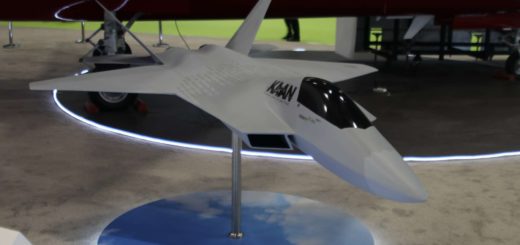Japan Plans to Acquire Kamikaze Drones to Strengthen Its Position in East China Sea

{loadposition bannertop}
{loadposition sidebarpub}
The Japanese military is preparing to integrate kamikaze drones into its arsenal for the first time, signaling a significant evolution in its military strategy. The Ministry of Defense announced that approximately 310 small attack drones will be introduced during the 2026 fiscal year. According to the Japanese newspaper The Sankei Shimbun on January 12, 2025, operational tests are underway with models manufactured in Israel, Australia, and Spain, with a competitive bidding process set to determine the final selection.
Follow Army Recognition on Google News at this link
Kamikaze drones could strengthen the defense of the vulnerable Nansei Islands between Kyushu and Taiwan (Picture source: Arquimea)
These kamikaze-type drones, equipped with explosives, are designed to destroy specific targets such as armored vehicles and small vessels. This strategic move aligns with the evolution of modern conflicts, where drones have played a central role, as evidenced by recent warfare in Ukraine. Their autonomous and destructive capabilities provide high operational efficiency at a relatively low cost, a crucial advantage in asymmetric or prolonged conflicts.
Japan faces an increasingly tense regional environment and aims to bolster its defensive posture in response to potential threats from neighboring countries. China has intensified military activities in the region, particularly around contested areas in the East China Sea, while North Korea continues to advance its ballistic missile and nuclear programs. In this context, kamikaze drones could play a pivotal role in reinforcing the defense of the Nansei Islands, a strategically important archipelago extending between Kyushu and Taiwan, which remains particularly vulnerable to incursions.
Integrating these drones into the infantry units of the Ground Self-Defense Forces (GSDF) will not only modernize Japan’s operational capabilities but also reduce reliance on combat and reconnaissance helicopters. These traditional assets, which are costly and require extensive maintenance, will be gradually replaced by drones, offering a more flexible and practical solution for current needs.
The Japanese government has allocated 3.2 billion yen in the 2025 fiscal budget to fund this acquisition. This initiative aligns with the objectives outlined in three key security documents adopted in December 2022, which emphasize the development of defense capabilities relying on unmanned systems. The Ministry of Defense plans to invest approximately 1 trillion yen over five years, starting in 2023, to expedite the deployment of drones and other advanced technologies.
These unmanned systems also address Japan’s demographic challenges. Declining birth rates and early retirements within the Self-Defense Forces have reduced available personnel. By automating dangerous missions, drones minimize risks to human lives and help mitigate workforce shortages.
Kamikaze drones also present economic advantages. Their acquisition costs are lower than traditional weaponry, and their deployment does not require extensive operator training. This pragmatic approach optimizes military expenditures while enhancing operational effectiveness.
The modernization effort extends beyond the GSDF. The Maritime and Air Self-Defense Forces are also advancing their respective drone programs. These include advanced reconnaissance drones, larger offensive drones transportable by vehicles, and logistics drones capable of operating in isolated or contested areas. These systems diversify Japan’s military capabilities, enabling quicker and more effective responses to emerging threats.
Japan’s acquisition of kamikaze drones carries significant geopolitical weight. By modernizing its military capabilities, Tokyo sends a clear message to both regional partners and rivals: it is committed to defending its interests and taking a more proactive role in maintaining security in the Asia-Pacific region. This approach aims to deter potential aggression while supporting allies, particularly the United States, in ensuring regional stability.
However, this decision may also be perceived as a military buildup, potentially drawing criticism from neighboring countries, particularly China. Such perceptions could lead to increased regional tensions and further accelerate military development programs among Japan’s neighbors, contributing to an arms race in the region.
The introduction of kamikaze drones into Japan’s arsenal marks a significant step in the transformation of the Self-Defense Forces. These unmanned systems, both efficient and cost-effective, provide Japan with tools to address contemporary security challenges while optimizing its human and material resources.
This initiative reflects a comprehensive strategy to modernize military capabilities while adapting to demographic and budgetary constraints. As regional tensions continue to escalate, these drones offer Japan a means to strengthen its defense and contribute actively to the security of the Asia-Pacific. How this move will impact the balance of power in the region and provoke responses from other nations remains to be seen.

{loadposition bannertop}
{loadposition sidebarpub}
The Japanese military is preparing to integrate kamikaze drones into its arsenal for the first time, signaling a significant evolution in its military strategy. The Ministry of Defense announced that approximately 310 small attack drones will be introduced during the 2026 fiscal year. According to the Japanese newspaper The Sankei Shimbun on January 12, 2025, operational tests are underway with models manufactured in Israel, Australia, and Spain, with a competitive bidding process set to determine the final selection.
Kamikaze drones could strengthen the defense of the vulnerable Nansei Islands between Kyushu and Taiwan (Picture source: Arquimea)
These kamikaze-type drones, equipped with explosives, are designed to destroy specific targets such as armored vehicles and small vessels. This strategic move aligns with the evolution of modern conflicts, where drones have played a central role, as evidenced by recent warfare in Ukraine. Their autonomous and destructive capabilities provide high operational efficiency at a relatively low cost, a crucial advantage in asymmetric or prolonged conflicts.
Japan faces an increasingly tense regional environment and aims to bolster its defensive posture in response to potential threats from neighboring countries. China has intensified military activities in the region, particularly around contested areas in the East China Sea, while North Korea continues to advance its ballistic missile and nuclear programs. In this context, kamikaze drones could play a pivotal role in reinforcing the defense of the Nansei Islands, a strategically important archipelago extending between Kyushu and Taiwan, which remains particularly vulnerable to incursions.
Integrating these drones into the infantry units of the Ground Self-Defense Forces (GSDF) will not only modernize Japan’s operational capabilities but also reduce reliance on combat and reconnaissance helicopters. These traditional assets, which are costly and require extensive maintenance, will be gradually replaced by drones, offering a more flexible and practical solution for current needs.
The Japanese government has allocated 3.2 billion yen in the 2025 fiscal budget to fund this acquisition. This initiative aligns with the objectives outlined in three key security documents adopted in December 2022, which emphasize the development of defense capabilities relying on unmanned systems. The Ministry of Defense plans to invest approximately 1 trillion yen over five years, starting in 2023, to expedite the deployment of drones and other advanced technologies.
These unmanned systems also address Japan’s demographic challenges. Declining birth rates and early retirements within the Self-Defense Forces have reduced available personnel. By automating dangerous missions, drones minimize risks to human lives and help mitigate workforce shortages.
Kamikaze drones also present economic advantages. Their acquisition costs are lower than traditional weaponry, and their deployment does not require extensive operator training. This pragmatic approach optimizes military expenditures while enhancing operational effectiveness.
The modernization effort extends beyond the GSDF. The Maritime and Air Self-Defense Forces are also advancing their respective drone programs. These include advanced reconnaissance drones, larger offensive drones transportable by vehicles, and logistics drones capable of operating in isolated or contested areas. These systems diversify Japan’s military capabilities, enabling quicker and more effective responses to emerging threats.
Japan’s acquisition of kamikaze drones carries significant geopolitical weight. By modernizing its military capabilities, Tokyo sends a clear message to both regional partners and rivals: it is committed to defending its interests and taking a more proactive role in maintaining security in the Asia-Pacific region. This approach aims to deter potential aggression while supporting allies, particularly the United States, in ensuring regional stability.
However, this decision may also be perceived as a military buildup, potentially drawing criticism from neighboring countries, particularly China. Such perceptions could lead to increased regional tensions and further accelerate military development programs among Japan’s neighbors, contributing to an arms race in the region.
The introduction of kamikaze drones into Japan’s arsenal marks a significant step in the transformation of the Self-Defense Forces. These unmanned systems, both efficient and cost-effective, provide Japan with tools to address contemporary security challenges while optimizing its human and material resources.
This initiative reflects a comprehensive strategy to modernize military capabilities while adapting to demographic and budgetary constraints. As regional tensions continue to escalate, these drones offer Japan a means to strengthen its defense and contribute actively to the security of the Asia-Pacific. How this move will impact the balance of power in the region and provoke responses from other nations remains to be seen.





